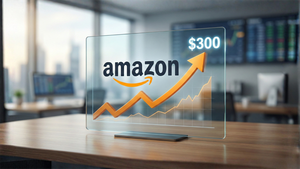
The global economy is grappling with a significant wave of escalating tariffs throughout 2025, primarily initiated by the United States, which has triggered widespread retaliatory measures from its key trading partners. These protectionist policies are casting a long shadow over global economic stability, threatening to decelerate growth, disrupt intricate supply chains, and intensify inflationary pressures that are already a concern for consumers and businesses worldwide. The International Monetary Fund (IMF) has already revised down its global growth projections, signaling a stark warning of the profound and far-reaching consequences of this trade war.
The immediate implications are dire, with economists predicting substantial welfare losses across major economies and a tangible increase in market volatility. As the costs of imported goods and services rise, central banks find themselves in a precarious position, tasked with balancing the twin challenges of curbing persistent inflation while fending off the growing risk of economic stagnation. This unprecedented surge in protectionism is reshaping the landscape of international trade, pushing the world towards a less efficient and more fragmented global economy.
The Global Trade Firewall: A Detailed Account of Recent Tariff Escalations
The year 2025 has been marked by an aggressive expansion of tariffs, spearheaded largely by the United States. The U.S. government implemented sweeping "reciprocal" tariffs, often guided by the ratio of trade deficits to imports, leading to minimum 10 percentage point increases on goods from numerous trade partners. By August 2025, the average applied U.S. tariff rate had surged from a modest 2.5% in January to an alarming 18.6%—the highest levels seen in nearly a century. This came after initial U.S. tariffs on steel, aluminum, and cars from Canada, Mexico, and China in February and March.
The ripple effect was immediate and widespread. Canada saw its tariffs rise from 25% to 35% from the U.S., prompting a swift retaliation with a 25% tariff on CAD 30 billion of U.S. imports. Mexico, initially facing a 25% U.S. tariff increase, received a 90-day pause until October 29. China, a perennial focus of trade disputes, saw U.S. tariffs jump from 10% to 20%, igniting a tit-for-tat escalation that pushed bilateral tariff rates to approximately 125%. China responded with 10-15% tariffs on U.S. agricultural products and other restrictions, with its tariffs on U.S. exports reaching an average of 32.6% on 100% of U.S. goods by mid-April.
While some regions experienced de-escalation, others faced significant new hurdles. The European Union (EU) and the U.S. reached a framework agreement in July 2025, setting a 15% tariff on most EU goods in exchange for substantial EU investments in the U.S., averting what could have been an effective tariff rate of 17%. Similarly, Japan secured an agreement with the U.S. to lower tariffs in exchange for investment. However, India faced tariffs totaling 50% on most imports, partly due to its continued import of Russian oil, and Brazil was hit with a combined 50% levy following a diplomatic dispute. Vietnam (NYSE: VNM) now faces a 20% U.S. tariff, a reduction from a threatened 46% but still a substantial increase from its previous 3.3%. South Korea (NYSE: SKM) also saw its effective tariff rate rise to an estimated 13.5%. Sector-specific tariffs also saw significant hikes, including 50% on steel, aluminum, and copper, and 25% on automobiles and auto parts.
The global market's reaction has been one of deep concern and volatility. The IMF has revised its global growth projection for 2025 down to 2.8% from 3.3%, largely attributing this to the abrupt increase in U.S. tariffs. Fitch Ratings cut its 2025 global GDP forecast to 1.9%, and economists anticipate a potential 2-2.5% downward impact on global GDP from these significant tariff increases. Fears of escalating protectionism have elevated global risk perception, causing global stock markets to shed trillions in value and signaling widespread anxiety among investors and businesses about the future of international trade.
The Shifting Sands of Trade: Unpacking the Winners and Losers in a Tariff-Laden World
The escalating global tariffs are creating a volatile landscape for businesses, delineating clear winners and losers based on their reliance on global supply chains, domestic production capabilities, and exposure to international markets. While tariffs are often championed as a shield for domestic industries, their real-world application often results in a complex web of increased costs, disrupted logistics, and retaliatory measures, tilting the scales for various sectors.
On the losing side, industries deeply embedded in global supply chains and those heavily reliant on exports face significant headwinds. The manufacturing sector, in particular, is taking a substantial hit. Carmakers like Ford (NYSE: F) and General Motors (NYSE: GM) have reported hundreds of millions in additional costs due to pricier steel and aluminum, leading to reduced profit forecasts and even considerations of U.S. job cuts, with both companies struggling with billions in losses and production halts. Similarly, heavy machinery manufacturers such as Caterpillar Inc. (NYSE: CAT) and Deere & Co. (NYSE: DE) have cited increased material costs, with Deere incurring approximately $300 million in tariff-related expenses, resulting in layoffs at some plants. The consumer electronics industry is also vulnerable, with Apple Inc. (NASDAQ: AAPL) facing pressure to absorb or pass on increased iPhone production costs, though it has strategically mitigated some impact by shifting manufacturing to India. Apparel, general fabrication, and parts manufacturing companies are also struggling with rising input costs and customers shifting production elsewhere.
The agriculture, forestry, fishing, and hunting sector is profoundly affected by retaliatory tariffs, particularly on key agricultural exports. U.S. soybean farmers, for instance, have seen significant losses due to China's retaliatory tariffs, historically a primary market for their produce. Pork producers and specialty crop farmers are also bracing for substantial annual losses. The retail and wholesale trade sector is also feeling the pinch, as increased import costs squeeze profit margins or force higher consumer prices, potentially dampening demand. Major retailers like Walmart (NYSE: WMT), Target (NYSE: TGT), and Costco (NASDAQ: COST) face potential inventory shrinkage and price hikes, while numerous small businesses, from toy stores to furniture outlets, have reported severe negative impacts, including closures. Even the healthcare sector, with its complex global supply chains for pharmaceuticals and medical devices, is not immune, facing potential increases in the cost and availability of critical items.
Conversely, a select group of industries and companies with strong domestic production capabilities are emerging as relative winners. U.S. steel and aluminum producers such as Nucor Corporation (NYSE: NUE), U.S. Steel (NYSE: X), and Cleveland-Cliffs (NYSE: CLF) are directly benefiting from tariffs on imported metals, which reduce foreign competition, allowing them to increase prices and production. Domestically focused automakers like Tesla (NASDAQ: TSLA), and to some extent, the domestic production arms of General Motors and Ford, can see their U.S.-assembled vehicles become more competitive against tariff-laden imports. U.S. semiconductor and technology firms with local manufacturing, like Intel (NASDAQ: INTC), are also poised to gain market share if foreign-produced chips face tariffs.
The energy and domestic resource production sector stands to benefit from tariffs on imported energy, making U.S. producers more competitive. Companies such as ExxonMobil (NYSE: XOM), Chevron (NYSE: CVX), and natural gas exporters like Cheniere Energy (NYSE: LNG) could expand their market share. In agriculture and food production, U.S.-based agribusiness giants like Archer Daniels Midland (NYSE: ADM) and Bunge Limited (NYSE: BG), as well as meat producers like Tyson Foods (NYSE: TSN), may see increased domestic sourcing and demand for their products. Finally, the defense and aerospace industry is likely to benefit from a governmental push towards domestic procurement, with contractors such as Lockheed Martin (NYSE: LMT), Raytheon Technologies (NYSE: RTX), and Northrop Grumman (NYSE: NOC) potentially securing more contracts for U.S.-made equipment. These companies primarily gain from reduced foreign competition, increased domestic demand, and government protection, though the broader economic consensus remains that the overall negative impacts of tariffs often outweigh these localized benefits.
A Fragmented Future: Industry Impact and Broader Implications of the Tariff Surge
The current wave of escalating global tariffs signifies a profound and potentially enduring shift in international trade policy, steering the world away from decades of liberalization towards an era of heightened protectionism. This monumental pivot is not merely an economic blip but a fundamental reordering of global commerce, with far-reaching implications for industries, international relations, and the very stability of the global economy. It marks a decisive move from a unipolar to a multipolar economic landscape, where national security concerns increasingly intersect with trade decisions, leading to a permanent reduction in the long-run trajectory of real GDP.
This protectionist surge is driving several critical industry trends. Deglobalization and fragmentation are accelerating, compelling companies to rethink their international strategies. The emphasis is now on supply chain reconfiguration, with a notable trend towards "nearshoring" or "reshoring" to mitigate tariff risks and geopolitical vulnerabilities. Digital tools, including AI simulations, are becoming indispensable for assessing the trade-offs between cost, continuity, and emissions in redesigning these complex networks. Unsurprisingly, the most direct impact is seen in increased costs and inflationary pressures. Tariffs act as a tax on imports, directly raising the cost of raw materials and components, which businesses then pass on to consumers, further fueling inflation and eroding purchasing power across various sectors, from manufacturing and agriculture to technology, retail, construction, and even healthcare. The manufacturing sector faces higher input costs for everything from steel to electronics, threatening competitiveness and jobs, while agriculture grapples with reduced exports and increased input prices for machinery and fertilizers. Technology, though less directly hit on digital products, faces increased component prices for consumer gadgets and industrial applications.
The ripple effects of these tariffs extend far beyond the directly impacted industries, disrupting global supply chains by altering cost structures and supplier relationships, leading to logistical challenges and delays. This instability undermines the efficiency of just-in-time ordering systems that many industries have come to rely on. Crucially, tariffs make domestic goods more expensive, reducing their competitiveness in international markets, a problem compounded by retaliatory tariffs that further constrict market access for exporters. This cycle often ignites full-blown "trade wars," straining international relations and creating profound uncertainty that stifles investment and slows global economic expansion. While some third countries might temporarily benefit from shifting trade flows, the overall weakening of global demand eventually impacts them too. Furthermore, the volatility spurred by tariffs can divert foreign investment to regions with more stable trade policies, eroding market confidence and leading to declines in stock and bond prices.
From a regulatory and policy perspective, the implications are equally significant. Nations are increasingly adjusting their trade policies to bolster domestic industries, often under the guise of national security, leading to greater reliance on executive authority and a less predictable regulatory environment. This shift fundamentally challenges the principles of multilateral trade systems like the World Trade Organization (WTO), as the use of specific tariffs against certain countries can violate the WTO's "Most-Favoured Nation" principle. The current non-functioning WTO Appellate Body due to blocked appointments exacerbates these challenges, leaving disputes unresolved. Businesses, in turn, face a heightened compliance burden due to intricate and evolving tariff regulations, necessitating robust risk assessment frameworks, adjustments to sourcing and investment strategies, and careful communication of price increases. Beyond tariffs, governments are also employing other tools like subsidies and tax policies to subtly influence trade balances.
History offers a stark warning about the potential consequences of such protectionist measures. The Smoot-Hawley Tariff Act of 1930 during the Great Depression, which significantly raised U.S. tariffs, triggered widespread retaliatory actions globally, drastically shrinking international trade and deepening the economic crisis—a cautionary tale frequently invoked today. Similarly, the 1960s steel tariffs by the Kennedy administration provoked anger and retaliation from European and Japanese allies, and the 1980s trade wars with Japan over automobiles and electronics strained diplomatic relations. More recently, the 2002 steel tariffs by President George W. Bush faced significant opposition and retaliatory threats, leading to their swift repeal to avert a full-scale trade war. These historical precedents consistently demonstrate that while tariffs aim to protect domestic industries, they frequently result in retaliatory measures, increased costs for consumers and businesses, severe disruptions to global trade, and often fail to achieve their original goals, leading instead to broader economic stagnation and international discord. The current escalating tariffs fit squarely into this historical pattern, threatening to repeat past mistakes on a global scale.
Navigating the New Normal: What Comes Next in a Tariff-Driven World
The road ahead for the global economy, heavily influenced by escalating tariffs, is fraught with both peril and the potential for profound transformation. In the short term, the immediate outlook points to continued economic slowdown and heightened recession risks globally, with growth forecasts for 2025 and 2026 facing persistent downward revisions. Inflationary pressures will likely intensify as the increased costs of imports are passed on to consumers, further eroding purchasing power. Market volatility, fueled by unpredictable trade policies, will remain a constant, and supply chain disruptions are expected to persist as businesses frantically reconfigure their sourcing strategies. For instance, by August 2025, U.S. consumer prices have already seen sharper increases in categories like motor vehicles, shoes, and apparel, complicating the Federal Reserve's ability to consider interest rate cuts amidst persistent inflation.
Looking to the long term, the prevailing consensus suggests a permanent structural shift away from unfettered globalization. This "new normal" will be characterized by a fragmented global order where national security increasingly dictates economic policy, and unpredictability becomes a constant. This period is effectively a move towards deglobalization, leading to a permanent reduction in the long-run path of real GDP. Supply chain regionalization, including "China+1" strategies and nearshoring, will become a defining feature, with companies prioritizing resilience over global efficiency, often at the expense of higher operational costs. This necessitates a fundamental re-evaluation of supply chains, higher production costs, the emergence of more defined regional trade blocs, and a heightened need for strategic stockpiling of critical resources.
To navigate this evolving landscape, businesses, governments, and investors must implement significant strategic pivots. For businesses, supply chain diversification is paramount, exploring alternative suppliers in less-tariffed countries like India or Mexico, or bringing production closer to home. Companies must also meticulously analyze their cost structures to adjust pricing strategies and absorb some tariff-related expenses. Risk mitigation strategies, including integrating geopolitical risk into strategic planning and investing in cybersecurity, are crucial, as is strict compliance with increasingly complex tariff regulations. Innovation, particularly in domestic production or alternative materials, and strategic partnerships, though riskier, will be vital. Governments must prioritize international cooperation to restore stability, recalibrate fiscal and monetary policies to manage inflation amidst supply shocks, and make strategic investments in digitalization, green energy, and infrastructure to build long-term resilience. Expediting trade negotiations to secure product-level exemptions for critical sectors can offer immediate relief. For investors, prioritizing portfolio resilience and global diversification is key, balancing allocations between high-quality bonds (for growth slowdown hedges) and real assets (for inflation protection), while also employing strategic sector rotation towards beneficiaries of protectionism and away from vulnerable sectors.
This tumultuous environment will present both market opportunities and challenges. Emerging markets, especially in Southeast Asia and India, could remain growth drivers, with India's manufacturing sector gaining traction as a trade alternative. Protectionist policies may foster a resurgence in domestic production and innovation, while aftermarket and repair services for durable goods could thrive as consumers hold onto products longer. Opportunities may also arise in sectors that facilitate supply chain regionalization, such as specialized logistics, industrial real estate development in new manufacturing zones, and technology providers for supply chain visibility. However, significant challenges loom, including increased input costs leading to reduced demand, persistent market volatility, and severe vulnerabilities for import-reliant industries like automotive, heavy machinery, and consumer electronics. The specter of stagflation—high inflation with stagnating growth—looms large, creating a dilemma for central banks, while overall global trade volumes are expected to suffer.
Several potential scenarios illustrate the range of possible outcomes. A pessimistic scenario envisions a continued escalation of trade tensions, leading to a significant global slowdown or even a recession, with global GDP ending up 1.6% lower than its pre-tariff baseline. Conversely, an optimistic scenario might see a "soft landing," where initial tariff impacts ease without a full-blown trade war, leading to a gradual de-escalation of tensions and renewed (though perhaps restructured) trade agreements. A highly plausible outcome is a fragmented global order as the "new normal," where economic nationalism prevails, resulting in a less interconnected but potentially more resilient global supply chain system. Other scenarios include proportional retaliation from major trading partners, further unsettling markets, or even an extreme "global split" towards bilateral autarky, potentially leading to a collapse in direct trade between major nations and a highly inefficient, reconfigured global value chain system. The future will largely depend on the duration and intensity of the tariff escalation and the adaptive strategies deployed by all stakeholders.
The Dawn of a New Economic Order: Concluding Thoughts on the Tariff Era
The escalating tariffs of 2025 represent a pivotal moment in global economic history, marking a decisive shift from an era of increasing trade liberalization to one dominated by economic nationalism and protectionism. This departure has already had, and will continue to have, profound and lasting impacts on economies, businesses, and international relations worldwide.
Key takeaways from this period highlight the broad scope and high rates of tariffs imposed by the U.S., triggering widespread retaliatory measures. These actions underscore the weaponization of tariffs as a geopolitical tool, often linked to national security and domestic policy objectives, rather than purely economic considerations. The immediate economic fallout includes significant stagflationary pressures, characterized by a global economic slowdown—with potential GDP reductions of 2-2.5%—coupled with persistent inflation, as evidenced by notable price hikes in consumer goods like motor vehicles, shoes, and apparel. Critically, these tariffs have severely disrupted global supply chains, forcing businesses to undertake costly and complex reconfigurations, often adopting "China-plus-one" strategies or nearshoring. The market's reaction has been one of heightened volatility and investor caution, with significant stock market declines and a shift towards defensive assets. Legal challenges to the tariffs, though some ruled illegal, add another layer of uncertainty to their future implementation.
Moving forward, the market is bracing for continued uncertainty and sub-par global growth through 2025 and 2026. Inflation is expected to remain entrenched, posing a significant dilemma for central banks like the Federal Reserve, which may find their ability to cut interest rates constrained by tariff-driven price increases. Supply chain reconfiguration will be an ongoing process, leading to a more fragmented and potentially less efficient global trade system. Industries reliant on global trade, from automotive to retail and technology, will face ongoing challenges. The emergence of regional trade blocs, potentially excluding the U.S., will further complicate international business.
The lasting significance of this era lies in a fundamental, permanent shift towards deglobalization. This "new normal" will see economic decisions increasingly intertwined with national security, resulting in a fractured global trade order and a perceived unreliability of traditional economic partners. The structural shock of these new trade policies is projected to lead to a permanent reduction in global real GDP, lower overall economic output, and diminished living standards, particularly impacting developing countries. Geopolitical realignments, fueled by intensified rivalries and strained alliances, are an inevitable consequence. The increased regulatory burden on businesses navigating intricate and evolving tariff regimes will add to operational costs and legal risks.
For investors, vigilance and adaptability are paramount in the coming months. Closely monitor policy developments and negotiations, especially any further tariff announcements or potential rollbacks, which could materially impact growth forecasts and inflation. Keep a keen eye on central bank actions as they grapple with the inflation-growth dilemma. Pay meticulous attention to economic data, including global GDP, inflation rates, manufacturing output, and employment figures, for clues on the tariffs' true impact. Observe corporate strategies around supply chain resilience and diversification, noting investments in new manufacturing hubs and the effectiveness of "China-plus-one" initiatives. Crucially, remain aware of geopolitical events and ongoing legal rulings concerning the tariffs, as these can drastically alter the trade landscape. Expect continued market volatility and consider building diversification into portfolios, staying nimble to capitalize on price dislocations, and potentially favoring defensive stocks or real assets in this complex and uncertain environment.





